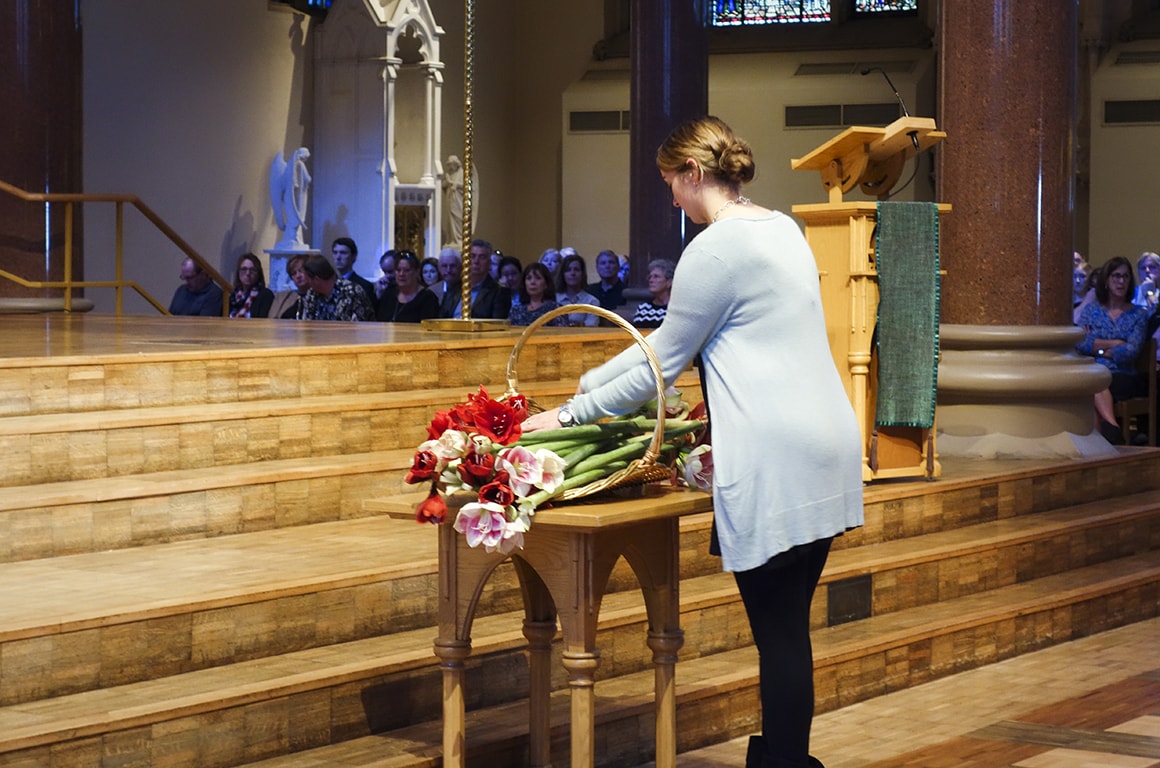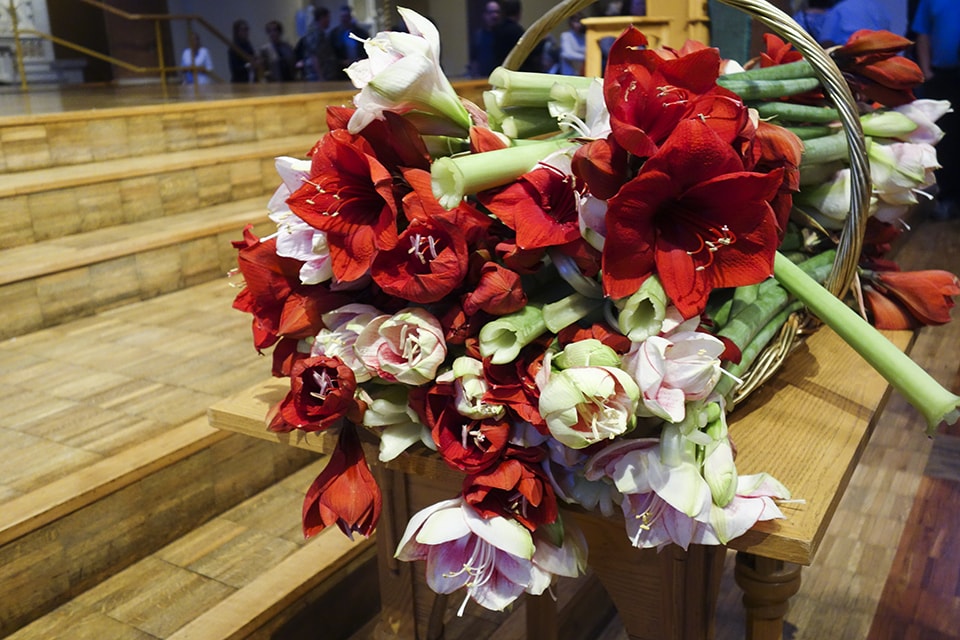SLU Medical Students Hold Interfaith Service to Honor Body Donors
ST. LOUIS – Medical students at Saint Louis University honored those who donated their bodies for medical education with an interfaith memorial service Friday.
The service is put together by first-year medical students, led by John Martin, Ph.D., director of the Center for Anatomical Science and Education (CASE), and MariaTeresa Tersigni-Tarrant, Ph.D., D-ABFA, associate professor in anatomy.
In addition to reading prayers, the students also perform the music, create the artwork and give personal reflections. Student Annie Sescleifer's reflection was a personal letter to her donor.
"I remember feeling so unsure and unsettled as I prepared to meet you, this beautiful person who had given me the most selfless gift I had ever received," she said. She added that said she couldn't focus on the lesson, thinking instead of the life of the person who was now her donor.
"After a few minutes, I realized that the only thing I could do to steady myself was to reach out and place my hand in yours. Even though you will never know, you quite literally held my hand through the first lab session."
Each year, people donate their bodies to SLU School of Medicine's Gift Body Program through the Center for Anatomical Science and Education to educate medical students, allied health students and residents.
In the past year, 387 people donated their bodies.
"You have taught me how sacred the human body is and I spend part of everyday thinking about not just your anatomy and physiology, but what they allowed you to do: who your eyes had seen, who your hands had touched, and who your heart had loved," Sescleifer said.
About 2,000 family members and friends attended the memorial service Friday, Nov. 4, as did students from Doisy College of Health Sciences.
The service, held at St. Francis Xavier College Church, honors all the faith traditions represented in the medical school class. This year's service included Catholic, Christian, Hindu, Islam and Mormon prayers.
Alysia Johnson's reflection was also written to her donor and recalled her grandmother's words; she always told her that the dates that mark the beginning and end of someone's life weren't what defined them. It was what you did with the dash - the time you had on the earth.
"But you had an after dash, one in which you touched the lives of 180-plus students," Johnson said. "You challenged us, humbled us, taught us, forced us to endure, demanded we actually put forth effort, and reminded us that we don't just get to be doctors. That we don't just deserve to be doctors. That the M.D. behind our name one day will be a privilege that we worked to earn."
A Tradition of Honor
Ashes are buried at Sts. Peter and Paul Cemetery, 7030 Gravois. A graveside service is conducted by the medical school campus minister and attended by CASE faculty and staff. At the site there is one common grave marker with the following inscription: "Saint Louis University and its students gratefully acknowledge the charity of those buried here who gave their remains for the advancement of medical science."
Mark Mullen shared with the families gathered Friday that while this was his first memorial service as a medical student, it was not the first he had a connection with. Four members of his family had donated their bodies to SLU over the years.
"There is something special about knowing I now have the opportunity to learn from your loved ones in the same way that four classes of medical students at SLU learned from mine."
Those interested in learning more about the gift body program can call 314-977-8027.
Established in 1836, Saint Louis University School of Medicine has the distinction of awarding the first medical degree west of the Mississippi River. The school educates physicians and biomedical scientists, conducts medical research, and provides health care on a local, national and international level. Research at the school seeks new cures and treatments in five key areas: infectious disease, liver disease, cancer, heart/lung disease, and aging and brain disorders.



















